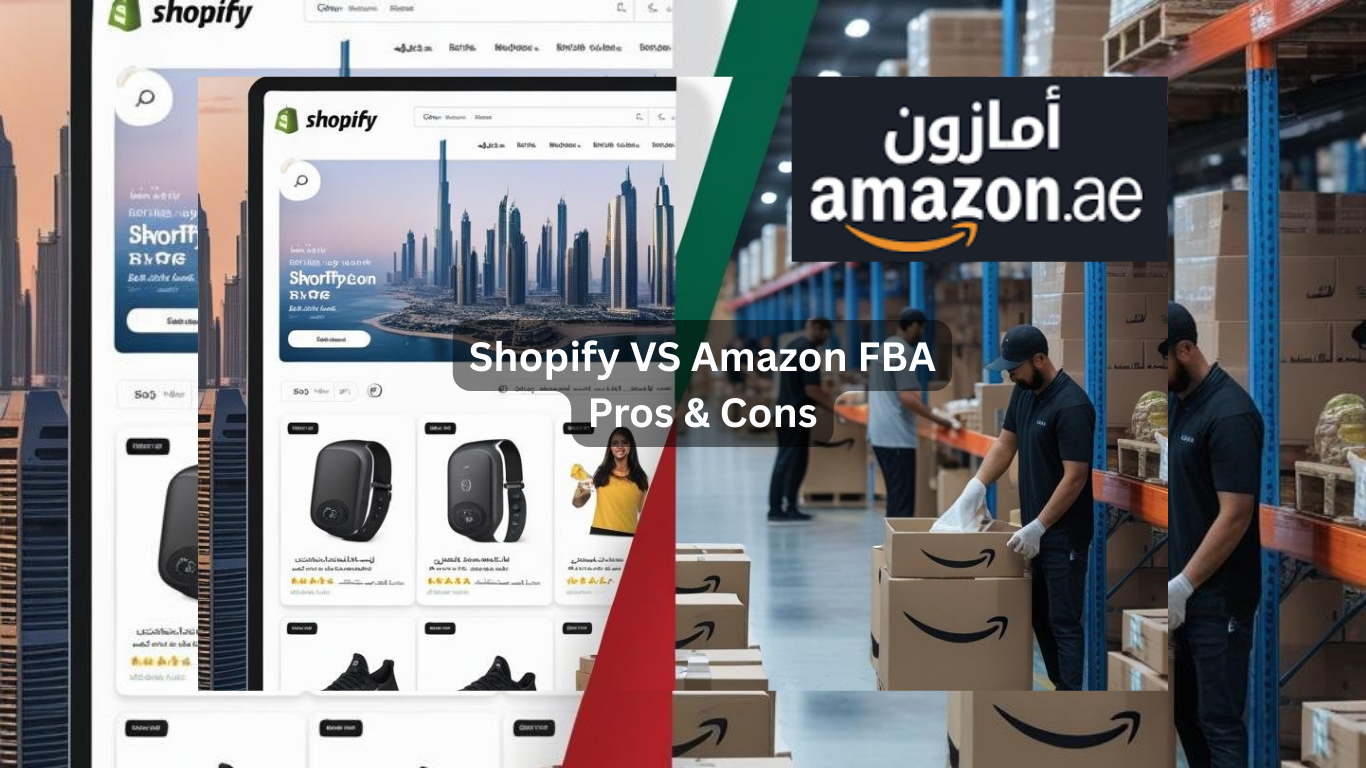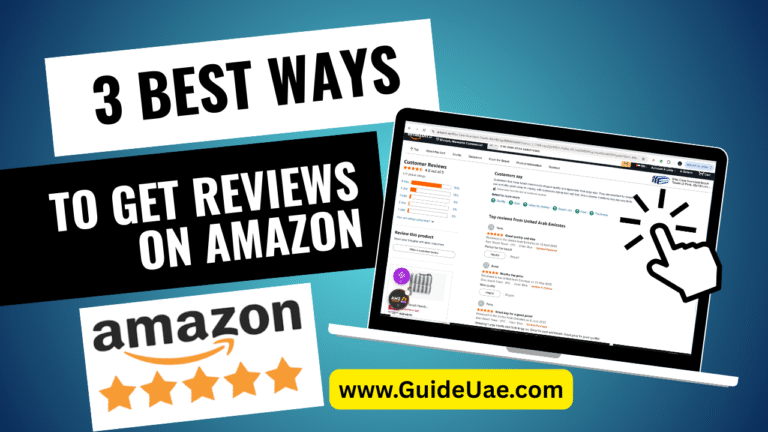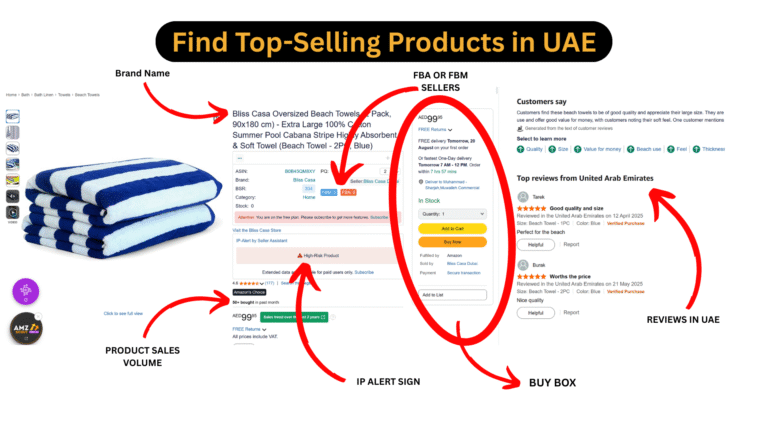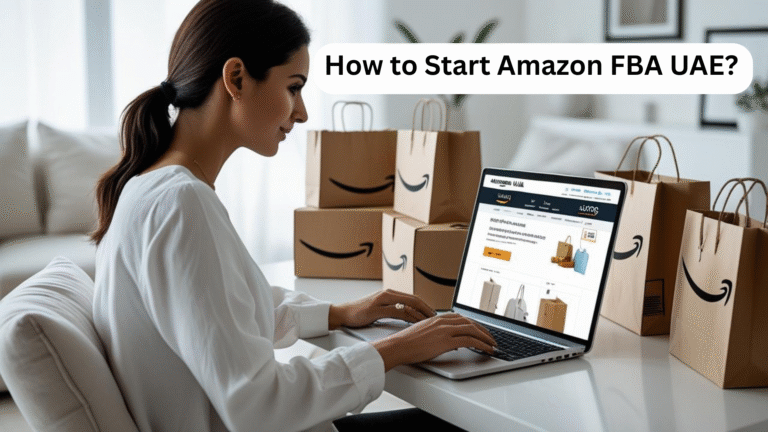Shopify VS Amazon FBA – Pros & Cons
If you’re just getting into e-commerce, you’ve probably asked yourself this question: Shopify VS Amazon, which one is better to start with? Many sellers in the Middle East and around the world face this same decision.
Both platforms work in different ways, and each has its own set of advantages and struggles. Let’s go through them step by step.
Read How to Start Amazon FBA UAE – Complete Step-by-Step Guide
Why Amazon FBA Works Well for Beginners
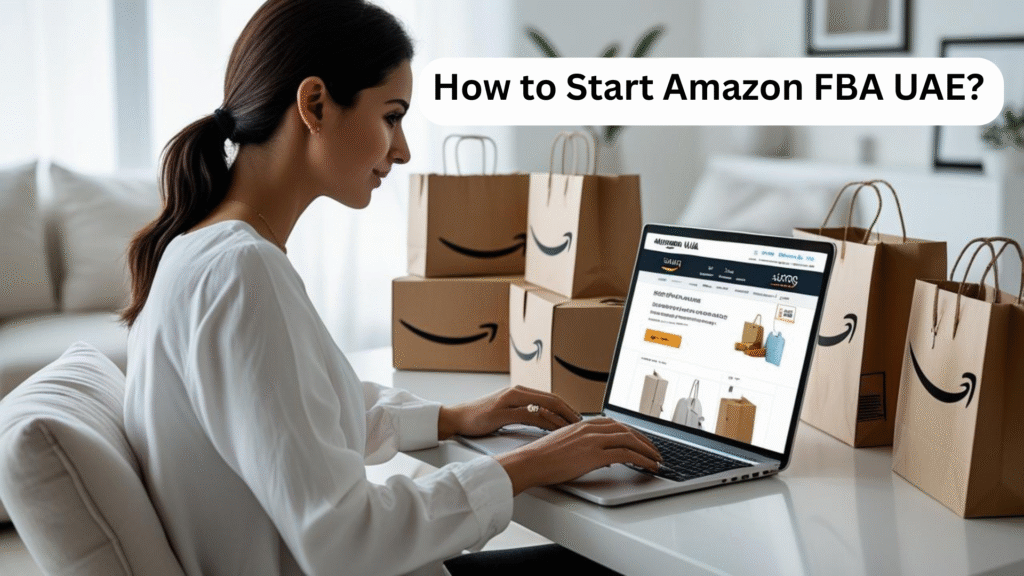
One of the strongest points about Amazon FBA is its size. Amazon is the biggest online marketplace in the world, and nearly 40% of all online shopping happens there. That means customers are already there, searching for products every single day.
Another benefit is that most of Amazon’s sales—almost two-thirds—come from third-party sellers. In other words, you don’t need to own a factory or be a big company. Regular sellers, just like you, are making sales on Amazon.
Traffic is another major reason people choose Amazon. Millions of customers trust Amazon and log in daily, so you don’t need to worry about how to bring them to your store—it’s already built into the platform.
On top of that, setting up a product listing is not complicated. You don’t need coding or technical knowledge. Just upload pictures, add bullet points, write a description, and you’re good to go.
Read How to Start a Business: My Journey from AED 1K to AED 100K in 6 Months
Why Shopify Might Be a Better Fit for Some

On the other side, Shopify gives you full freedom. You can design your store exactly the way you want and make it look unique to your brand. This is something you cannot do on Amazon, where everything follows the same layout.
Another big plus is that you own your customer data. With Shopify, you can see who bought from you, collect emails, and market to them again.
This is powerful because repeat customers are a huge part of sales—some studies show 60–70% of Shopify store sales come from the same people buying again. That’s how you can build brand loyalty.
Read Starting a Business in the UAE: Registration, Free Zones, Finances, & Marketing
The Downsides of Amazon FBA
Amazon isn’t perfect. The biggest issue is that you don’t really control your customer relationships. Amazon has strict rules about how much you can contact buyers. Also, mistakes can easily get your account suspended, listings removed, or products flagged.
And when that happens, Seller Support doesn’t always give you the help you’d hope for—they focus more on the customer than the seller.
Read How to Make Money Online: Best Ways to Sell on Amazon UAE
The Downsides of Shopify
Shopify also has its own struggles. One of the most common problems is abandoned carts. Many people will add items to their cart but leave without buying. This usually happens because they don’t fully trust a new website, or they hesitate to enter card details.
Another challenge is fulfillment. On Amazon FBA, Amazon handles shipping, returns, and logistics. But on Shopify, you’re fully responsible for delivering products unless you hire a third-party service. This can get complicated as your orders grow.
Summary Table
| FEATURE | SHOPIFY | AMAZON FBA |
|---|---|---|
| Brand Control | Full | Limited |
| Customer Data | Owned by you | Owned by Amazon |
| Traffic | You generate | Amazon provides |
| Fulfillment | You (or 3rd party) | Amazon handles |
| Fees | Lower, predictable | Higher, variable |
| Competition | Lower | Higher |
| Scalability | High, customizable | High, but less flexible |
Read How to Find Top-Selling Products in UAE for Amazon
Final Thoughts: Shopify VS Amazon
So, which one should you choose—Shopify or Amazon FBA? Honestly, both are valuable. If you’re a beginner, Amazon FBA is usually the smarter starting point. It’s easier to launch, faster to make sales, and you don’t need to worry about bringing traffic to your store.
Once you grow and want to build a long-term brand, you should add Shopify. That way, you’ll have more control over your customers, create repeat orders, and strengthen your brand identity.
The best strategy is to start on Amazon, then expand to Shopify. That way, you’ll get the benefits of both.
FAQs on Shopify VS Amazon
Q1: Is Amazon FBA better than Shopify for beginners?
Yes, because Amazon already has customers waiting. You don’t need to spend time or money on advertising when you’re just starting out.
Q2: Can I use both Shopify and Amazon FBA together?
Definitely. Many sellers launch on Amazon and later build a Shopify store to gain more control over their brand.
Q3: Which one costs more, Shopify or Amazon FBA?
It depends. Amazon takes fees for fulfillment and referrals, while Shopify has a fixed monthly cost plus transaction fees. Long term, Shopify can be cheaper if you drive your own traffic.
Q4: Why do customers abandon carts on Shopify?
It’s usually because of trust. People know Amazon and trust it, but with a new website, they might worry about payment safety or delivery reliability.
Q5: How do I build customer loyalty if I sell only on Amazon FBA?
It’s harder since you don’t own the data, but you can still build loyalty through great products, packaging inserts, and later by creating your own Shopify website.

